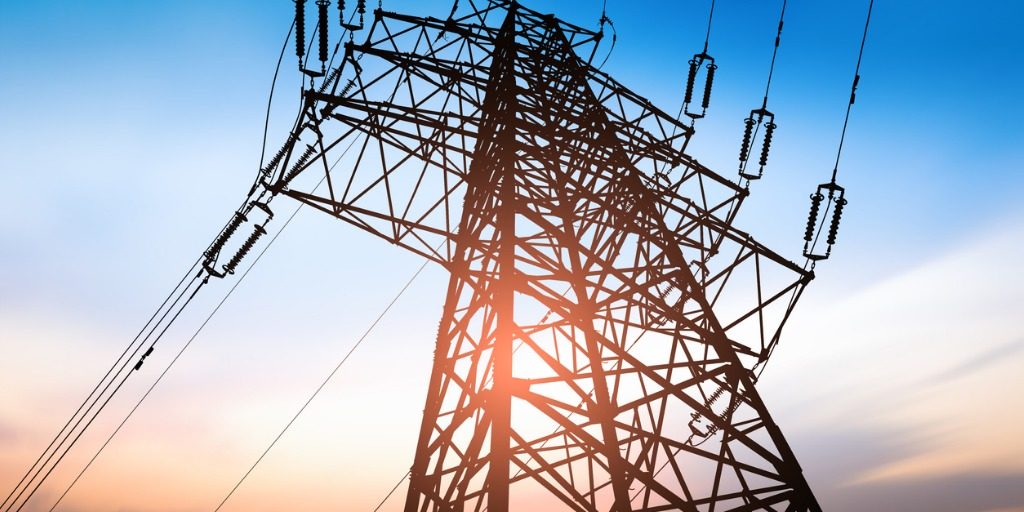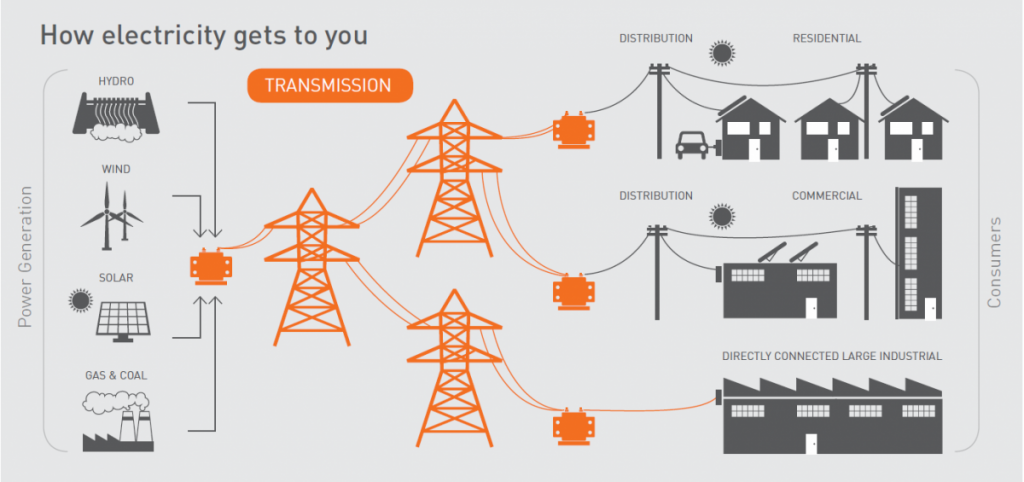What is transmission’s role in the clean energy future?
The interstate transmission network is Australia’s electricity superhighway. It is an essential link between power generators and customers, transporting high voltage electricity over long distances.
Our transmission networks are valued at more than $20 billion and the National Electricity Market (NEM) backbone comprises more than 43,000km[1] of transmission lines. Most of these are hanging from big towers, although a small amount are underground. Transmission accounts for about 1.3c/kWh as an average cost across all customers in the NEM.

Electricity transmission networks are the heavy lifters of our power system. Not only do they move power to where it is needed, they have range of vital functions:
- Security and reliability of power supply;
- Facilitating competition in the wholesale electricity market;
- Grid stability by providing start-up services to support large appliances, balancing services for fluctuating demand and power quality services to enable the safe operation of appliances;
- 24-hour-a-day, seven-days-a-week back up for supply to meet customers’ peak demand when on-site generation is not available;
- Continuous market access enabling customers to sell their power back into the grid and avoid the need to over-build on site generation.

Figure 1. Transmission’s role in the electricity supply chain
The evolution of Australia’s transmission network
The transmission network traditionally connected large power generators, such as coal (generally located a long way from where people live and work), to the lower voltage distribution networks in our cities and towns. This is changing with the shift to renewables.
Australia’s east-coast transmission system has evolved to connect networks between states and is the world’s longest interconnected system. This is an increasingly important feature as renewable generation increases and distributed energy resources like household solar and storage grow. If the sun isn’t shining and the wind isn’t blowing in one state, power and system stability can be delivered from another where it is. This network allows the National Electricity Market (NEM) to operate, increasing the stability of the energy system and reliability of power supplies. It also helps transport the lowest cost generation to customers.

Figure 2. Australia’s transmission networks (Source: Australian Renewable Energy Mapping Infrastructure)
Power for all, reliably and safely
Transmission networks are designed to ensure a high level of reliability and safety to get supply to the low voltage distribution networks (the poles and wires you see in the streets that deliver power to households and businesses). Electricity transmission also directly supplies large industrial customers such as mines and paper mills. Any outage or failure on the transmission network can affect a lot of people over a large area, both within and potentially across states. In contrast, any failure on the distribution network is more localised and affects a smaller number of customers.
Increasing the capacity of existing transmission interconnectors or high voltage lines can lead to more customers accessing cheaper and more reliable electricity. This creates more competition in the electricity wholesale market, leading to lower wholesale electricity prices and therefore lower electricity bills to consumers.

Figure 3. The value of transmission in our transforming energy system. (Source: ElectraNet)
The shift to renewables – our energy future
The rapid construction and the resultant need to connect new generation capacity is at unprecedented levels.
Assuming that coal fired generators retire in the scheduled timeframes, generation capacity of about 35 per cent of the scheduled electricity demand in the NEM will have left the system by 2035. This is roughly equivalent to the entire demand for NSW.
The retiring fleet is largely being replaced by wind and solar in different locations. This renewable generation will be complemented by pumped hydro, battery and gas peaking generation plants for when it’s neither sunny nor windy. New and enhanced transmission networks will be needed to move the power around the system locally and interstate.
The Australian Energy Market Operator’s Integrated System Plan advocates a coordinated approach to the development of transmission infrastructure to support lower emissions generation and meet customer demand.
This will ensure any new transmission investment is developed efficiently, where it is most needed and at lowest cost and greatest benefit to customers.
There are significant technical, engineering and social challenges and opportunities ahead as Australia transitions to a clean energy future.
Our 20th century electricity system is being re-purposed and re-engineered to accommodate 21st century requirements. In this system, connectivity is key to system security, power reliability and a more competitive wholesale market. Australia’s transmission superhighway has never been more important.
[1] Based on 2017/2018 Economic Benchmarking Regulatory Information Notices
